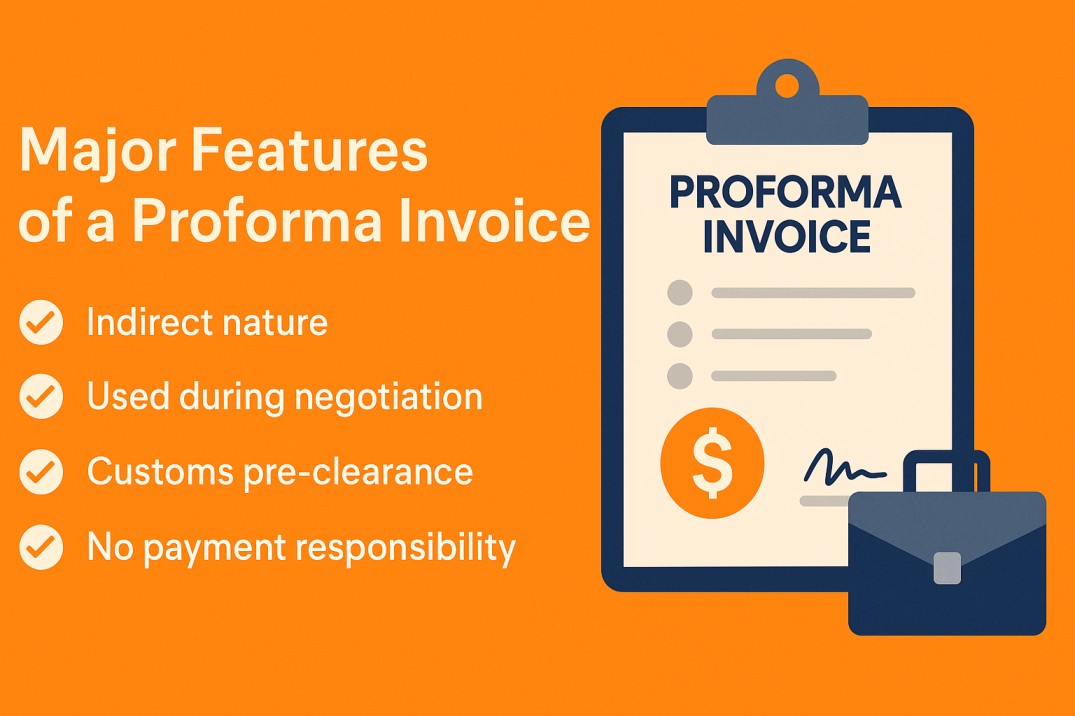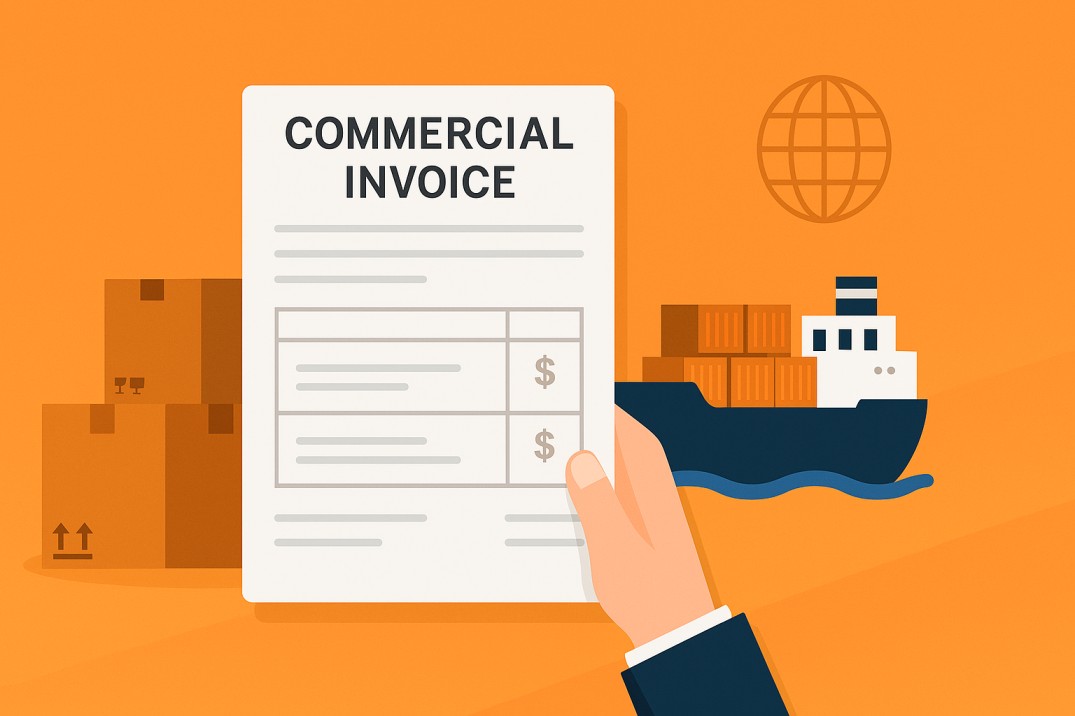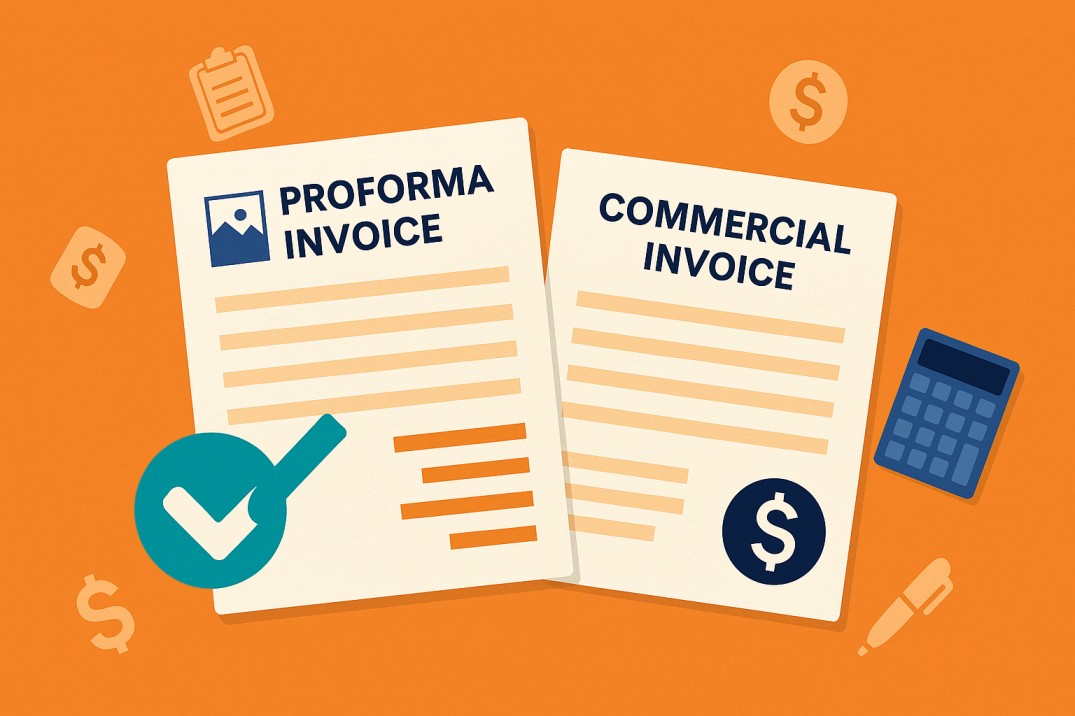When it comes to business transactions, Invoices play an important role, especially in international transactions. Two commonly used types of invoices are Proforma invoices and Commercial invoices. Despite their similar names, these invoices serve distinct purposes at different stages of a transaction. Understanding these differences is necessary to streamline business operations, ensure compliance and avoid expensive errors. This blog covers everything you need to know about the proforma invoice vs commercial invoice, their definitions, features, cases of use and the two need to cover the major differences between them.
What is a Proforma Invoice?
A proforma invoice is an initial invoice or sales document issued by the seller to the buyer before the actual transaction takes place. Think of it as a non-negotiable quote that acts as an approximation of cost and conditions for products or services being introduced. The main goal of a proforma invoice is to provide clarity and transparency during the negotiation phase of a business deal.
A proforma invoice highlights some important details such as:
- Details of goods or services are being sold.
- Estimated cost, volume and sale conditions.
- Shipping information and potential fees.
- Terms and methods of payment.

Major Features of a Proforma Invoice:
- Indirect nature: A proforma invoice is not legally binding. This gives an estimate, not a final demand for payment.
- Used during Negotiation: It serves as a tool to interact on conditions between buyers and vendors before finalizing a deal.
- Customs Pre-clearance: A proforma invoice can be used to initiate customs withdrawal for international shipment, although this is not an option of commercial invoice.
- No payment responsibility: Since it is not a final document, it does not make a legal obligation to pay the buyer.
When is a Proforma Invoice Used?
A proforma invoice is issued before the transaction starts, making it invaluable during decision making and planning. For example:
- A buyer needs to confirm whether cost and conditions align with their procurement requirements.
- A company requires details of costs to secure financing or obtain internal approval.
- Documents are required to estimate customs and ensure compliance, especially when handling international purchase orders.
Example of a proforma invoice in action:
Suppose you are looking for a company looking for 1,000 units of a product from a supplier. The supplier provides a proforma invoice with the cost of the item, shipping deadline and payment terms. You use a proforma invoice to estimate the total expenses and get approval from your Finance Department. Once both sides agree on the details, the transaction will move forward.
What is a Commercial Invoice?
A commercial invoice is a formal document released by the seller after finalizing a transaction. It is a legally binding agreement, similar to how a standard invoice acts when closing a domestic sale. Unlike the proforma invoice, the commercial invoice includes the final details of the transaction, such as the methods of accurate prices, payment and shipping details, as well as the information required for customs refund and tax objectives.
Key Features of a Commercial Invoice:
- Legal Binding: Commercial invoice is a binding document, which binds the buyer to pay according to the agreed conditions.
- Final transaction details: It includes final pricing, details of goods, shipment details and other specifics agreed by both sides.
- Required for customs clearance: Commercial invoices are important for international trade as Customs officials use them to calculate duties and taxes.
- Direct payment request: Unlike the proforma invoice, a commercial invoice is an official payment request.
Core Elements of a Commercial Invoice:
- Seller and buyer details (name, address, contact information).
- Detailed description of goods or services.
- The quantity and value of items.
- Harmonized System (HS) Code and Native Country.
- Terms and methods of payment.
- Shipment details, such as carrier’s name and tracking information.
When is a Commercial Invoice Used?
Once the buyer and the seller agree on the terms of the transaction and the goods have been sent or distributed, the commercial invoice is used. General scenarios include:
- To formalize an international shipment where commercial invoicing standards must be properly met for customs duty.
- To communicate the final billing details to a buyer for payment.
- Serving as evidence of transactions for accounting purposes.

Example of a Commercial Invoice in Action
Once your international supplier ships 1,000 units ordered by you, they issue a commercial invoice. This includes total cost, shipping details and HS code for customs. You use this invoice to clean the shipment through customs and pay to the supplier for goods received.
Proforma Invoice Vs Commercial Invoice | Differences
Now that we have discovered what each invoice is, let us highlight the major difference between a proforma invoice and a commercial invoice in a structured format. Understanding these distinctions will help you use the right document at the right time.
| Aspect | Proforma Invoice | Commercial Invoice |
| Purpose | Provides a quote or estimated costs | Offers final and legally binding details of the transaction |
| Request for Payment | Not a payment request | Official demand for payment |
| Legally Binding | No | Yes |
| Stage of Transaction | Before the deal is finalized | After goods/services have been delivered |
| Use in Customs | Informational, similar to proforma invoice practices that pre-organize customs clearance. | Essential for customs clearance and duties calculation |
| Alterations Allowed | Yes, changes can be negotiated | No, it reflects final agreed terms |
A Quick Comparison
- Intention of Use: A proforma invoice is used as a pre–selling dialogue tool, while a commercial invoice is used for post-sales payment and shipping documentation.
- Validity: A proforma invoice is not legally binding, while a commercial invoice is applied by law.
- Adaptation: Proforma invoice allows for adjustment, such as changes in volume or shipping costs, while commercial invoices represent final transactions.
- International trade role: Proforma invoices help in preparing documentation for customs in advance; Commercial invoices are mandatory for cleaning goods through customs.
- Accuracy of information: Proforma invoices provide estimates, while commercial invoices give accurate details.
Why You Need to Know These Differences
Understanding the difference between Proforma vs commercial invoice is important for any business in domestic or international trade. here’s why:
- Avoid delay in transaction: Confusion of a proforma invoice for a commercial invoice may lead to customs hold-up or payment dispute.
- Compliance with regulations: Customs officers require accurate documentation such as commercial invoices for duty and tax evaluation.
- Efficient Planning: Proforma invoices allow buyers to prepare for upcoming costs and ensure smooth approval.
Practical Tips for Using Each Invoice
- Use the Proforma invoice during the negotiation phase or when providing a quotation to a potential customer.
- Always verify all invoice details carefully — it’s a best practice in vendor invoice management too — before presenting them for customs or payment processing.
- Communicate clearly with your buyer or seller so that both sides can ensure which document is being released.
Final Thoughts
The difference between a proforma invoice and a commercial invoice boils for the purpose they serve in a transaction. The pre -acts as an initial agreement, offering a detailed estimate that facilitates the decision making, while the latter acts as a legally binding document that starts payment and shipping processes.
By using a proforma invoice, business talks can refine and align expectations. Transition in a commercial invoice is the next step to finalize agreements and ensure compliance with trade rules. To know which documents to use, at which stage is not only practical, but essential for smooth business operations, especially in the complex world of international trade.
Always take time out to understand the requirements of your business transactions and make sure you are taking advantage of the right invoice for the right purpose!
Create Invoices Instantly – Free & Easy!
Generate professional invoices in seconds with our Free Online Invoice Generator.
👉 Try the Invoice Generator Now

Leave a Reply